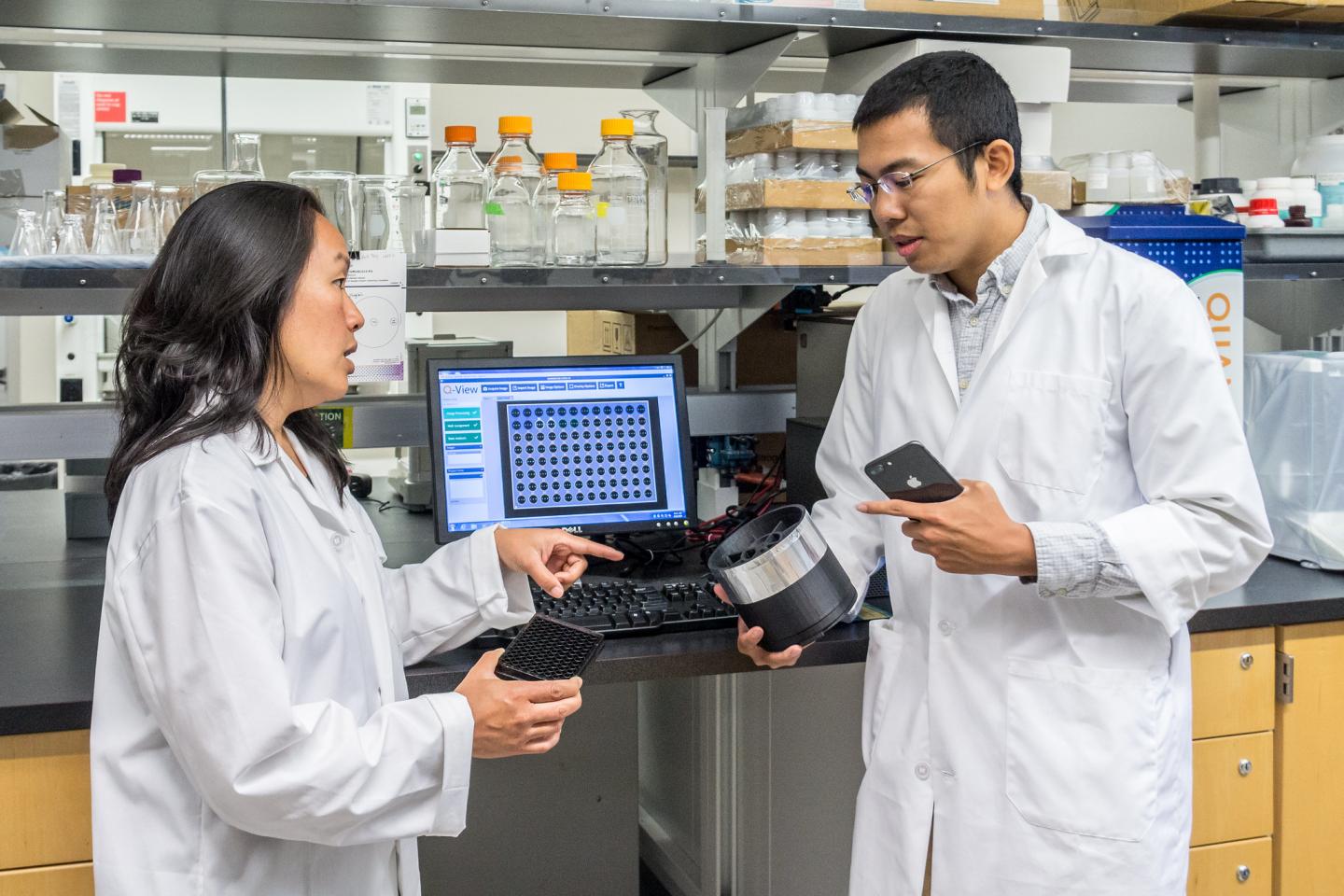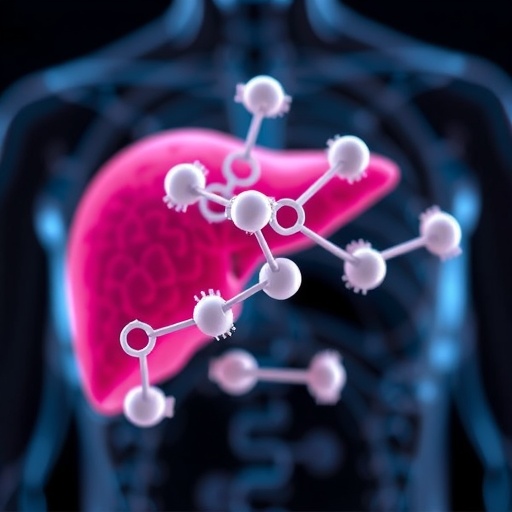
Credit: SFU
A Simon Fraser University researcher is hoping to help women in rural areas access information about their reproductive health using a common tool in their pockets: a smartphone.
Zhendong Cao has developed a unique way to take advantage of a smartphone’s camera so that it could eventually help perform non-clinical diagnostic testing, with initial applications that can help women with family planning and reproductive health monitoring.
Cao’s thesis project was co-supervised by engineering science professor Ash Parameswaran and health sciences professor Pablo Nepomnaschy. The research addresses a key challenge for Nepomnaschy’s field studies in Guatemala.
“A smartphone’s camera can distinguish up to 16-million colours,” says Cao, who recently graduated with a master’s degree in applied sciences. “We’re taking advantage of this capability to do the same kind of diagnostic testing that a microplate reader does in a laboratory — except we’re using an everyday phone.”
Typically, researchers perform diagnostic tests in a laboratory that is equipped with a microplate reader. Microplate readers can cost thousands of dollars and weigh more than 50 pounds. Cao’s device is part of a system that, when completed, will allow researchers to carry out those same laboratory tests anywhere in the world.
To develop his technology, Cao modified the software inside a smartphone’s camera to analyze the amount of coloured pixels and UV light in a photo of a biological sample.
The colours in the photo’s pixels correspond to a known “signature” produced by a substance — for example, estrogen — that the researcher or health-care provider is investigating. The way light is absorbed or emitted can indicate a sample’s concentration, such as how much estrogen is present in saliva. In addition to estrogen, the researcher or clinician could test other indicators of women’s reproductive health and stress levels, which could affect her ability to get pregnant.
To improve the accuracy and efficiency of the tests, Cao also created a light-blocking container the size of a cookie tin that houses multiple samples for testing. The container shields against interference from ambient light and helps the smartphone capture a more precise image. Altogether, Cao demonstrated that the result of the smartphone’s tests were comparable to the original microplate reader technology.
Cao’s innovation could enable high-quality lab testing to become hand-held, supporting faster research in the short term, or perhaps one day, more rapid access to reproductive health information and diagnoses in rural areas.
Though Cao’s innovation is not yet commercialized, the team hopes to test it for Nepomnaschy’s field studies in rural areas in the future.
###
About Simon Fraser University:
As Canada’s engaged university, SFU is defined by its dynamic integration of innovative education, cutting-edge research and far-reaching community engagement. SFU was founded more than 50 years ago with a mission to be a different kind of university–to bring an interdisciplinary approach to learning, embrace bold initiatives, and engage with communities near and far. Today, SFU is Canada’s leading comprehensive research university and is ranked one of the top universities in the world. With campuses in British Columbia’s three largest cities – Vancouver, Burnaby and Surrey – SFU has eight faculties, delivers almost 150 programs to over 35,000 students, and boasts more than 155,000 alumni in 143 countries around the world.
Simon Fraser University: Engaging Students. Engaging Research. Engaging Communities.
Media Contact
Zhendong Cao
[email protected]
Original Source
http://www.




